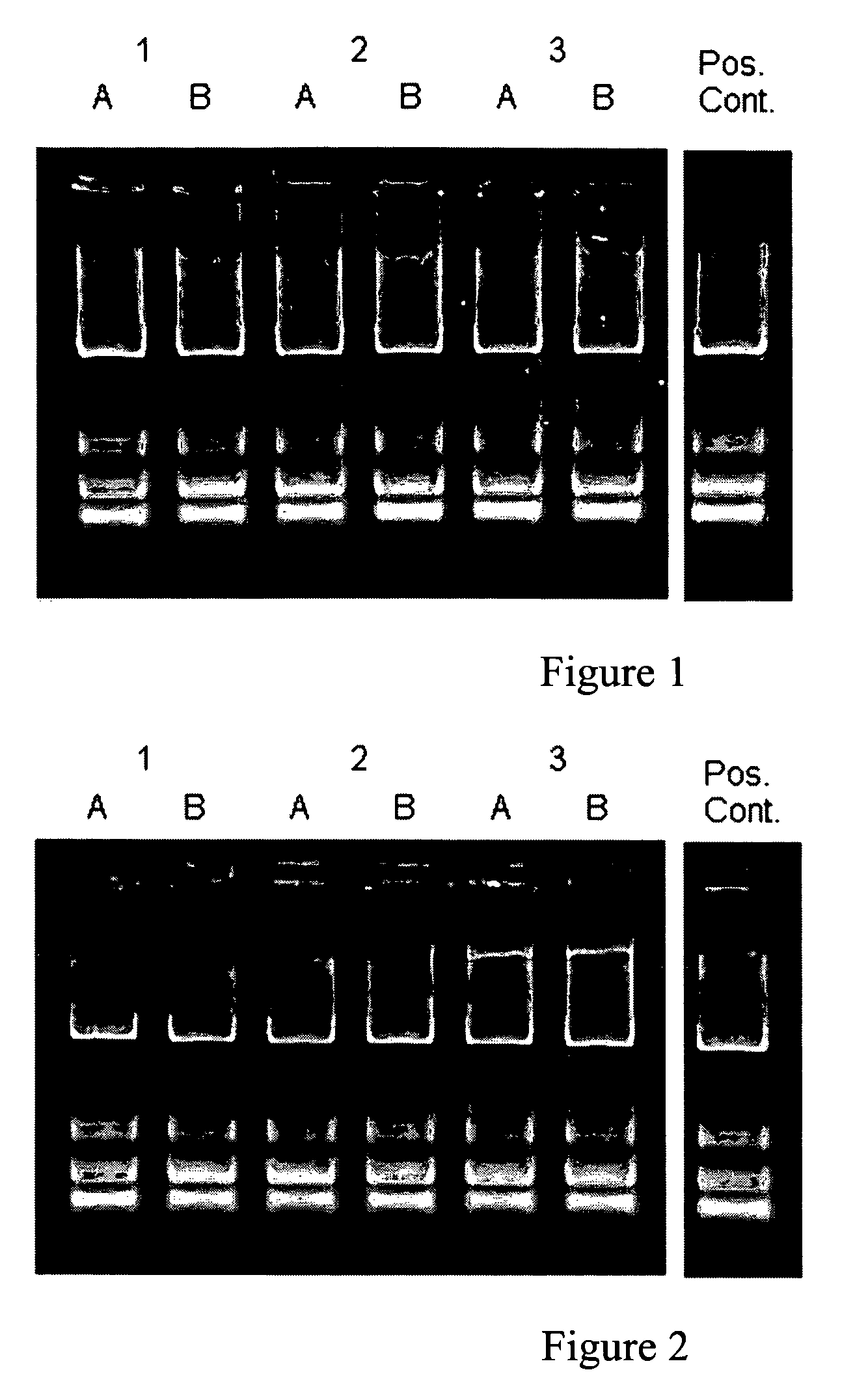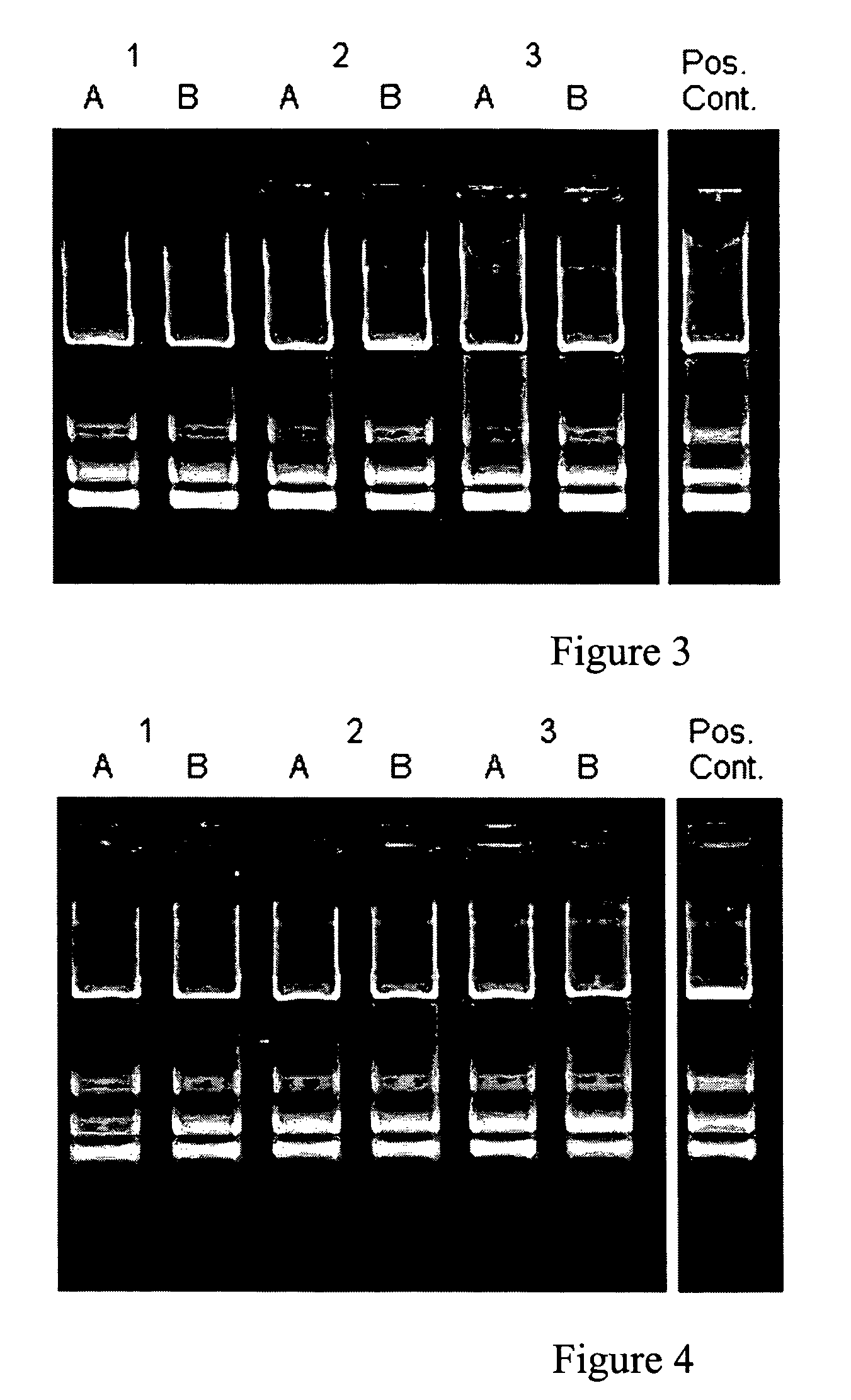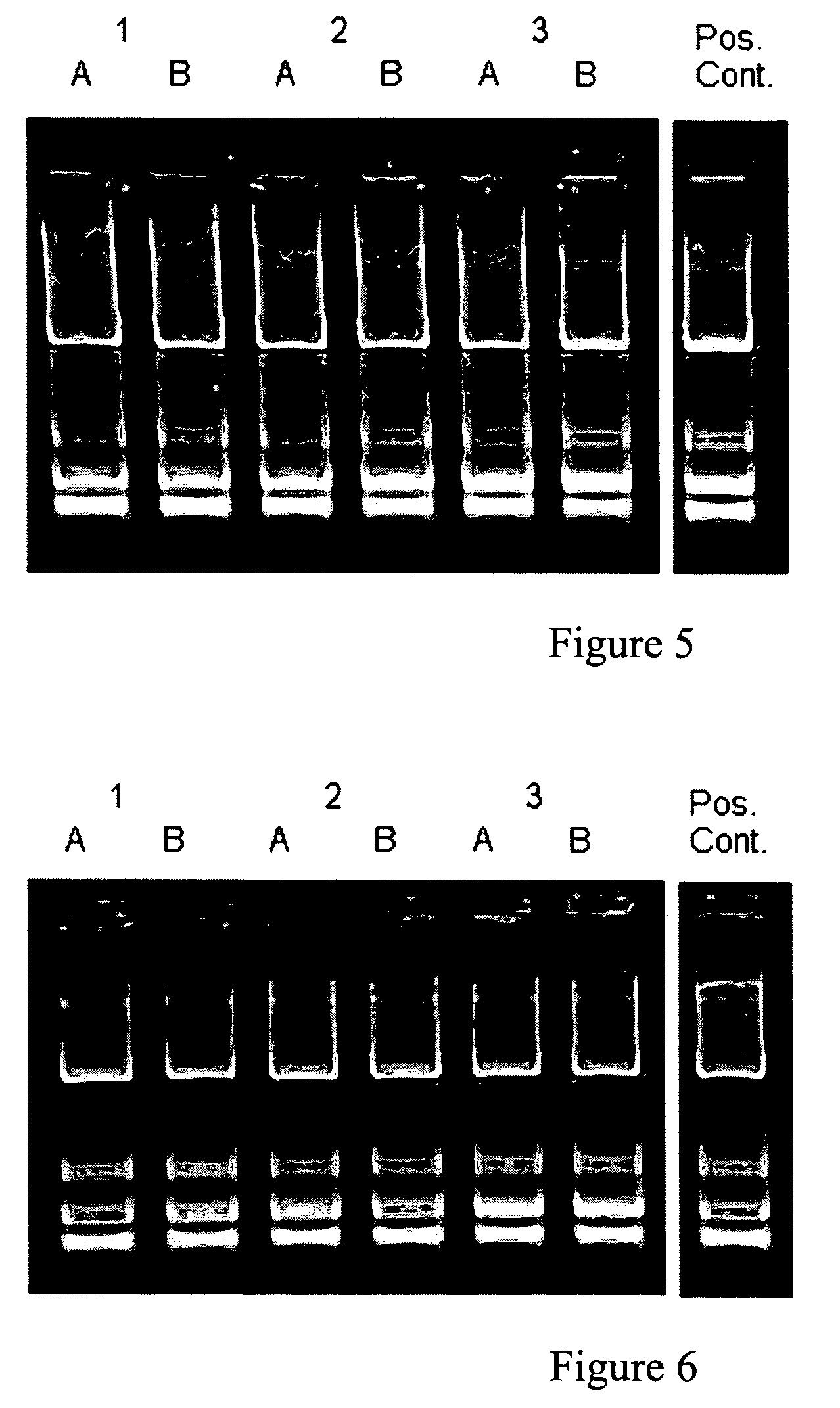Enrichment methods for the detection of pathogens and other microbes
a technology for applied in the field of enrichment methods for the detection of pathogens and other microorganisms, can solve the problems of consuming about a day of product shelf life and extra refrigeration storage time, and achieve the effects of accurate, cost-effective and timely detection
- Summary
- Abstract
- Description
- Claims
- Application Information
AI Technical Summary
Benefits of technology
Problems solved by technology
Method used
Image
Examples
example i
Enrichment Methods Based on 1:0.5 Dilution Samples to Media Were Found to be Effective)
[0098]To compare the effectiveness of dry (1:0.5 meat to media) to standard (1:10) enrichment methods on the growth of Escerichia coli O157:H7 and Salmonella spp. on experimentally inoculated meat samples incubated for 6, 7, 8, and 24 h. E. coli and Salmonella spp. were detected with a multiplex polymerase chain reaction (PCR) technique.
Materials and Methods
[0099]Inoculum preparation. Colonies of E. coli O157:H7 and Salmonella typhi isolated from clinical samples were grown on MacConkey II agar (BD Diagnostic Systems, Sparks, Md.) and XLD (BD), respectively. Random colonies of E. coli O157 were confirmed with E. coli O157 Latex Test Kit (Oxoid, Hampshire, UK). Each pathogen were independently cultured in E. coli O157 Bax® System media (Dupont Qualicon by Oxoid Ltd., Hampshire, England) at 37° C. for 24 h. Serial dilutions of each inoculum were done separately in 0.1% peptone water (BD). Enumeratio...
example ii
[0132]Costs comparisons of the inventive methods with those of the prior art are as follows:
TSB medium comparison:
[0133]TSB 1 lb (453.59 g)=>$25-27 (depending on quantity ordered);
[0134]Working dilution: 30 g / L;
[0135]From 453.59 g, make ±15.11 L;
[0136]Price per Liter=±$1.65 to $1.78;
[0137]Prior art price per sample (225 ml)=(225 / 1000)*1.65=±$0.37 to $0.40; and
[0138]Inventive method price per sample (50 ml)=(50 / 1000)*1.65=±$0.082 to 0.089.
TSB medium comparison:
[0139]E. coli O157 Bax® System media (Dupont Qualicon by Oxoid Ltd., Hampshire, England);
[0140]2.5 Kg (2500 g)=
[0141]Working dilution: 36.6 g / L;
[0142]From 2,500 g, make ±68.3 L;
[0143]Price per liter=±$4.39;
[0144]Prior art price per sample (225 ml)=(225 / 1000)*4.39 =$0.98; and
[0145]Inventive method price per sample (50 ml)=(50 / 1000)*4.39=±$0.21.
PUM
| Property | Measurement | Unit |
|---|---|---|
| optimal temperature | aaaaa | aaaaa |
| time | aaaaa | aaaaa |
| temperature | aaaaa | aaaaa |
Abstract
Description
Claims
Application Information
 Login to View More
Login to View More - R&D
- Intellectual Property
- Life Sciences
- Materials
- Tech Scout
- Unparalleled Data Quality
- Higher Quality Content
- 60% Fewer Hallucinations
Browse by: Latest US Patents, China's latest patents, Technical Efficacy Thesaurus, Application Domain, Technology Topic, Popular Technical Reports.
© 2025 PatSnap. All rights reserved.Legal|Privacy policy|Modern Slavery Act Transparency Statement|Sitemap|About US| Contact US: help@patsnap.com



